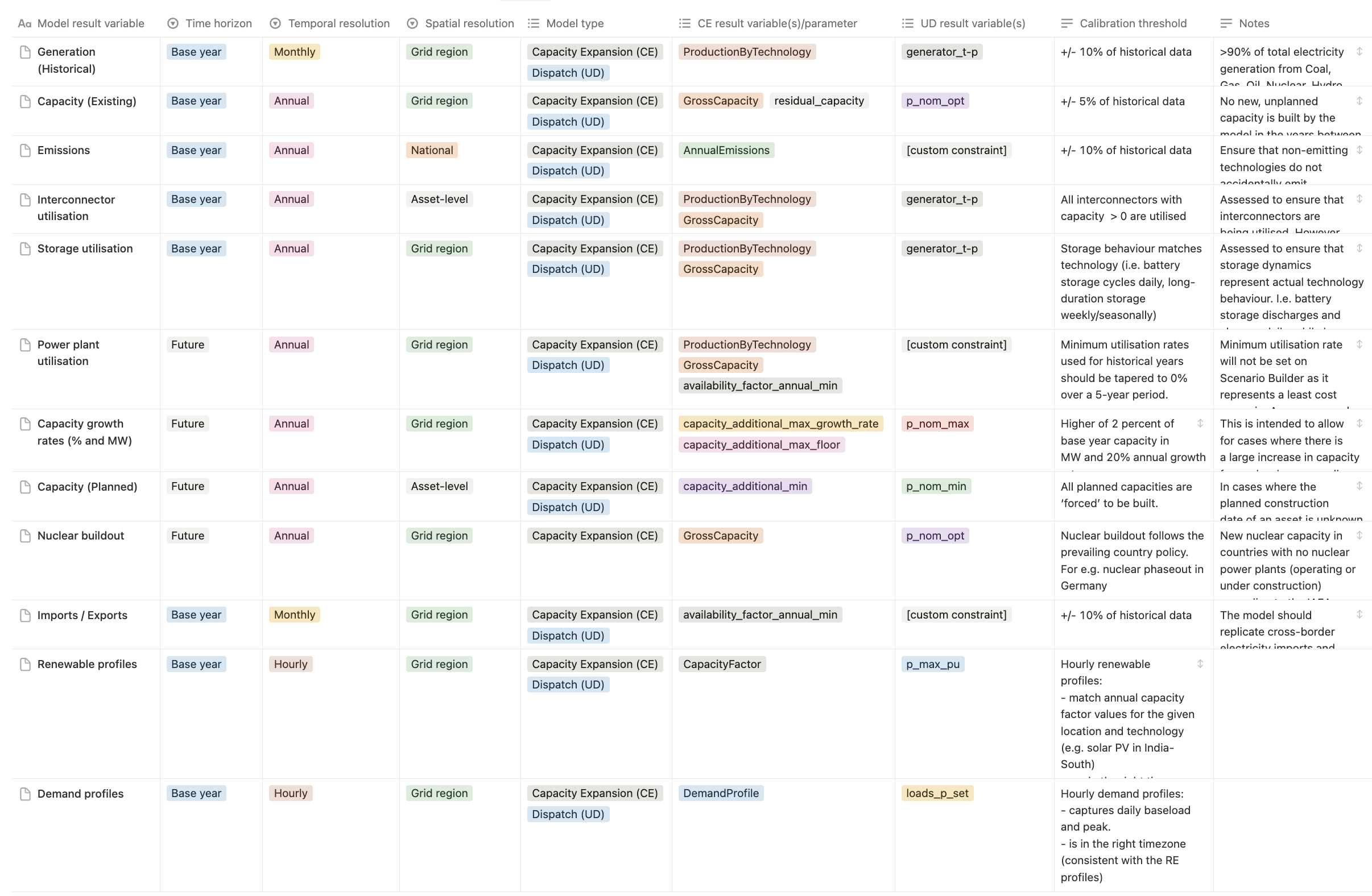Changelog
Model calibration standard published
Model Calibration
The table below sets out the calibration standard for all energy system models that will be built at TZ. It applies to both Capacity Expansion (tz-osemosys) and Unit Dispatch (PyPSA). The calibration standard is country- and scenario-agnostic. This means that it applies to all countries and all scenarios. It consists of a list of model results that should be checked against their respective calibration thresholds to consider a model ‘calibrated’. It also specifies the resolution - spatial and temporal - at which these calibration thresholds should be applied. For e.g. Emissions in the base year should be within +/- 10% of actual historical data for the base year. Model calibration is an essential step in building credibility. The goal of calibration is produce models that analysts can use with confidence. A calibrated model will both reproduce historical energy system trends as well as plausible future energy system pathways. A basic calibration covers capacities, generation, emissions, and trade at a relatively coarse resolution (annual for an entire country). As model and data availability improves, calibration will performed at higher resolution (e.g. hourly for each region) and for a wider range of metrics (e.g. electricity prices). Higher standards of calibration will increase the data and modelling requirements for a given electricity system. For e.g., calibrating a model for electricity prices will require improvements to the model representation of ancillary services, capacity markets etc. as well as remuneration data related to each. Below is a step-by-step guide to the model calibration process: 1. Gather historical data:- Collect reliable historical data for the calibration period for the relevant metrics.
- Ensure the data is consistent with the model’s temporal and spatial resolution.
- Select the model parameters that can be adjusted to improve the fit with historical data.
- Manual Calibration: Adjust parameters, run the model, compare results to historical data, and repeat.
- [Future work] Automated Calibration: Use optimisation algorithms to find the parameter set that minimises the difference between model results and historical data.
- Compare the model outputs with the historical data for the chosen metrics.
- Calculate error metrics against the calibration threshold for each of the chosen metrics
- If the model results do not adequately match the historical data, repeat Steps 4 and 5.+
- Adjust parameters and re-run the model
- Validate the calibrated model by comparing its performance for future years and measuring it against the calibration threshold.
Calibration Standard
Click here to view the full calibration standard

